
|
|
Scuttlebutt News Center:Where Are They Now - Eric Schlageter
(July 12, 2004) - A trail that began in the Midwest, passed through the notable naval architectural school of the University of Michigan with the likes of Bruce Nelson, Bill Tripp, John Reichel, and Brendan Dobroth, and then began a yacht design firm that stood MORC and handicap yachting on its ear for most of the 70’s and 80’s. Later it was the America’s Cup, where his involvement has included every campaign since 1987. And now, where it looks unlikely that he’ll be providing his skills to the ’07 cup, and with his time consumed with top-secret government projects, we thought it was time to ask, “Eric Schlagater…Where Are You Now?” It seems like a long time ago when Eric Schlagater partnered with Scott Graham to form the Chicago-based G&S, where their boat designs soon dominated Great Lakes, national and international racing. Eric remembers their beginning, “'Chocolate Chips', a ¾ ton design we did in 1977, was a big success, winning the 1978 ¾ Ton NAs held in San Diego and placing 3rd in the Worlds held in Vancouver, BC. After Chips’ success we enjoyed a steady flow of work. There was the fractionally rigged half-tonner called 'Warrior' that won both Mac races overall in 1979 and a similar designed boat named 'Ciao' that won the Chicago ¾ Ton NA’s in the early eighties.” But it was their thirty-foot design for Fred Horwitz of Milwaukee that provided G&S with broad market exposure. Named 'Pinocchio', she won her class in the 1981 MORC Internationals, which got the attention of S2 Yachts of Holland, MI. The boat builder was looking to make an upgrade to their line of family cruisers, and commissioned G&S to design the S2 7.9m. “It was a trailerable, daggerboard MORC design about 26’ long,” said Eric. “The basic hull form, with different appendage packages won the MORC Internationals in 1983 and 1984. The class still has active one-design fleets around the country and continues to place well in various events.”
The G&S team penned several more models for S2, which over the next few years built several hundred of their designs. When S2 Yachts got out of the sailboat business in the late eighties, G&S stayed busy with IOR and MORC design work, and were also part of the design team for Chicago YC’s America’s Cup challenge, 'Heart of America'. But when IOR and MORC began to fade, Scott Graham and Eric Schlageter were at a crossroads. Scott left the firm in 1989 to take a position at USYRU as an offshore technical director. Later that same year, Eric was approached by a company called SAIC, through Bruce Nelson, to head up their Americas’s Cup VPP effort. In early 1990, Schlageter closed down G&S and moved to SAIC’s headquarters in San Diego to take the position. How did a company like SAIC, better known for the technical support and solutions it provided “governments,” get involved in the Amrica’s Cup? Eric recalls, “SAIC got involved with Dennis Conner following the 1983 defeat. The Chairman of SAIC, Dr. Robert Beyster, felt strongly that American technology could provide the winning edge to American syndicates. DC’s success in ‘87 proved him right. “After the new IACC rule was developed in 1989, SAIC, with Dr. Beyster’s support, formed a consortium called PACT (Partnership for America’s Cup Technology). The primary objective of this consortium was to develop tools, technology, and data relevant to the new IACC class and San Diego’s venue. My role was to develop and maintain a VPP that focused specifically on IACC boat performance. PACT conducted tank tests of IACC designs, assembled weather data for SD, and performed numerous validation studies of various CFD (computational Fluid Dynamics) tools including hydro and aero models. This early technical effort proved valuable to the American syndicates.” Working for SAIC, Eric’s America’s Cup involvement soon also included Team Dennis Conner in ’92, the Young America syndicate in ’95, Paul Cayard’s America One team in ’00, and the OneWorld syndicate in ’03. Surprisingly, SAIC has no plans for the 2007 America’s Cup. Eric comments, “At the present time one fledging syndicate has approached us to provide some minor consulting work, but no plans have been firmed up. Honestly, I don’t think SAIC will be involved much this go around. SAIC’s founder, Bob Beyster, the driving force behind the company's participation in past AC work, may soon retire. Since we no longer enjoy the strong support of upper management, I fear this may be the first time in 20 years that myself and SAIC will not be involved in an America’s Cup campaign.”
So with no America’s Cup to contend with, what does SAIC’s Senior Naval Architect in the Naval Hydrodynamics Division do for work? Explains Eric, “Our division in San Diego has basically one customer, the US Navy. Some of my colleagues conduct pure research on state-of-the-art numerical approaches to resolving the flow around ships. Many of our staff are involved in experiments to support Navy research including full-scale and model-scale tests. The last few years I have been engaged primarily in support of the Navy’s future surface combatant, the DD(X). There is a lot of synergy between AC and Navy work as tools developed to solve one customer’s problems are quite often applicable to solving the other’s problems.” With fourteen years on the west coast, Eric now sees himself as a native Californian. “I do NOT miss Midwest winters,” Eric emphasizes. “The winters in California are great! I have been surfing and snowboarding for years. My goal is to do both on the same day! But I do miss Chicago. It is a wonderful city and the people in the Midwest are perhaps the friendliest in the country. Looking back, it’s hard to imagine spending 15 years pursuing a dream (designing racing boats) as Scott and I did. We made a lot of friends and had a lot of fun during what turns out to be the heyday of American offshore sailing. We were very fortunate and thankful for all those who showed enough faith in our designs to buy our boats and campaign them so hard.” While the fortunes of the US Navy have replaced the aspirations of boat owners seeking championship results, the local sports community has also provided change in Schlageter’s life. “Much of my time over the last few years has been spent coaching sports, mostly Little League, and expect to keep it up for a few more. I have a 9 year old son and a 12 year old daughter, and feel this is a time in their lives when it is important and fun to be around them. It is also a time during which they actually still seem to like me! Needless to say this has cut into sailing time significantly.” So now, having moved on from the days of whiz-kid yacht designer, no longer behind-the-scenes providing the next America’s Cup speed secret, but still remaining active at a high level. Just goes to show that you never know who you might bump into at the local baseball hitting cages, or sitting across from you at a high level, super secret, government meeting. It might just be…Eric Schlageter. |






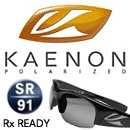

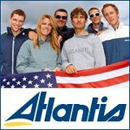
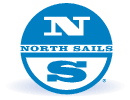

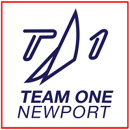


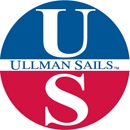


|





